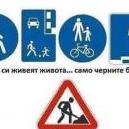Произход на титлата таркан?
-
Последна активност
-
- 42 мнения
- 1000 прегледa
-
Руско-украинската война 2022-2024 година. 1 2 3 4 160
От Р. Теодосиев, in Руско-украинската война 2022 година.
- 3999 мнения
- 235641 прегледa
-
- 1799 мнения
- 155727 прегледa
-
- 43 мнения
- 1138 прегледa
-
Как ще се отразят санкциите на Русия и как на останалия свят? 1 2 3 4 58
От Warlord, in Руско-украинската война 2022 година.
- 1444 мнения
- 81490 прегледa
-
-
Последно разглеждащи 0 Потребители
- No registered users viewing this page.



Препръчано мнение
Напиши мнение
Може да публикувате сега и да се регистрирате по-късно. Ако вече имате акаунт, влезте от ТУК , за да публикувате.